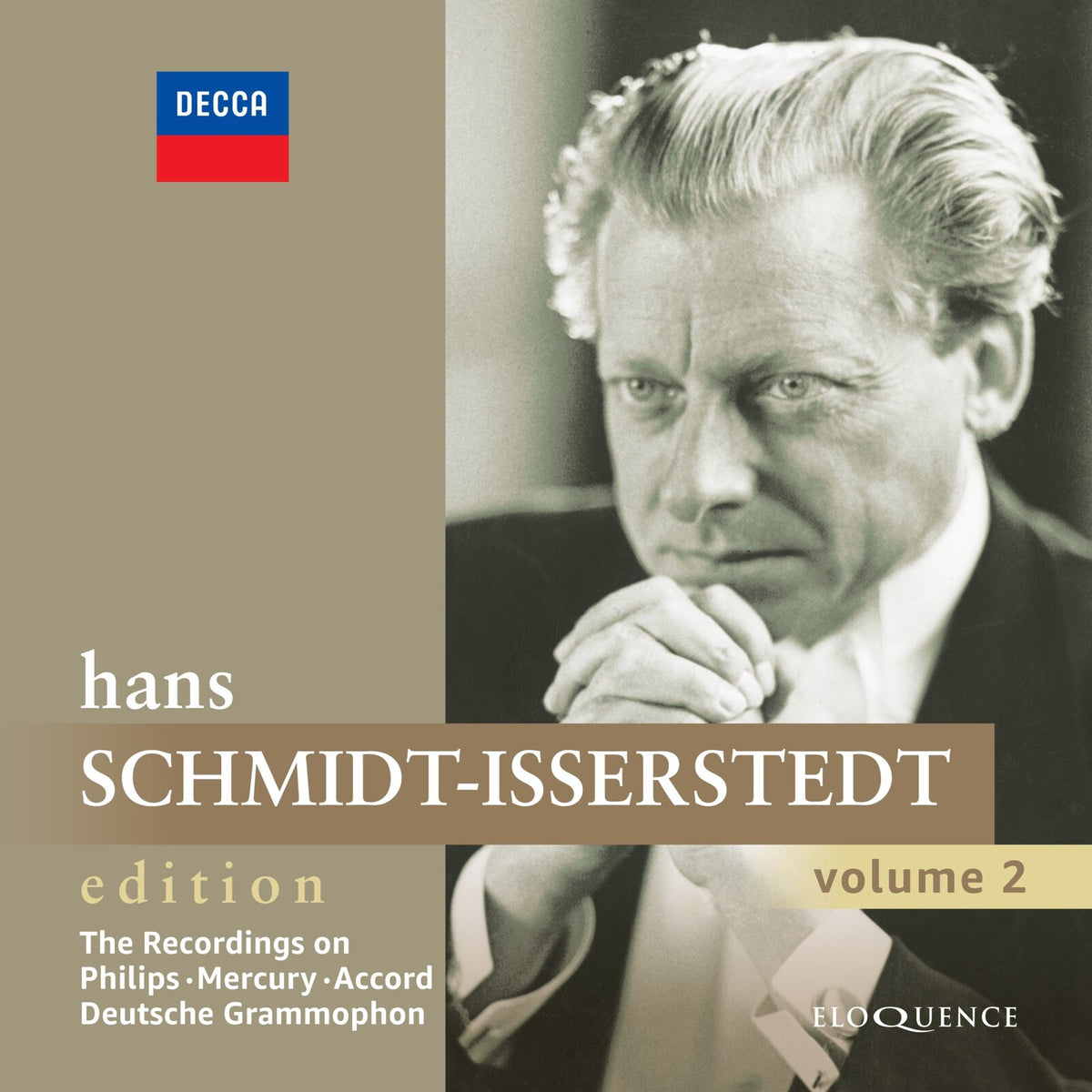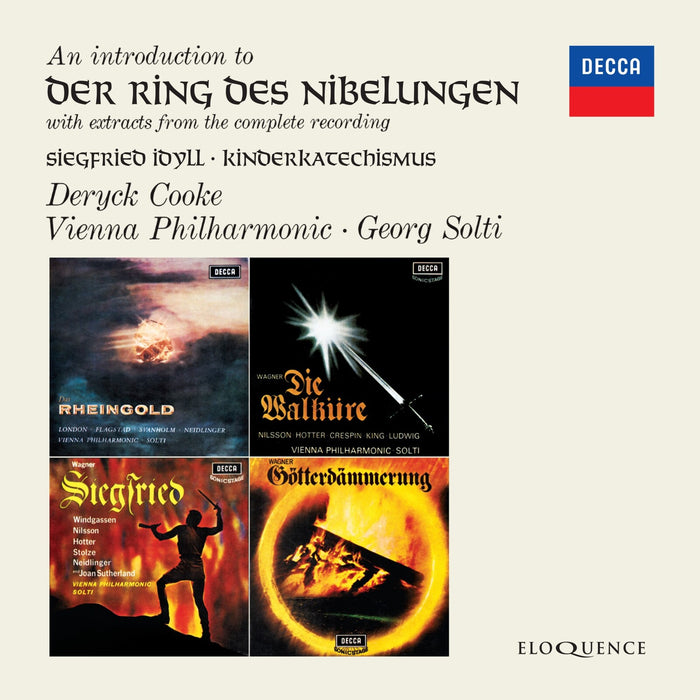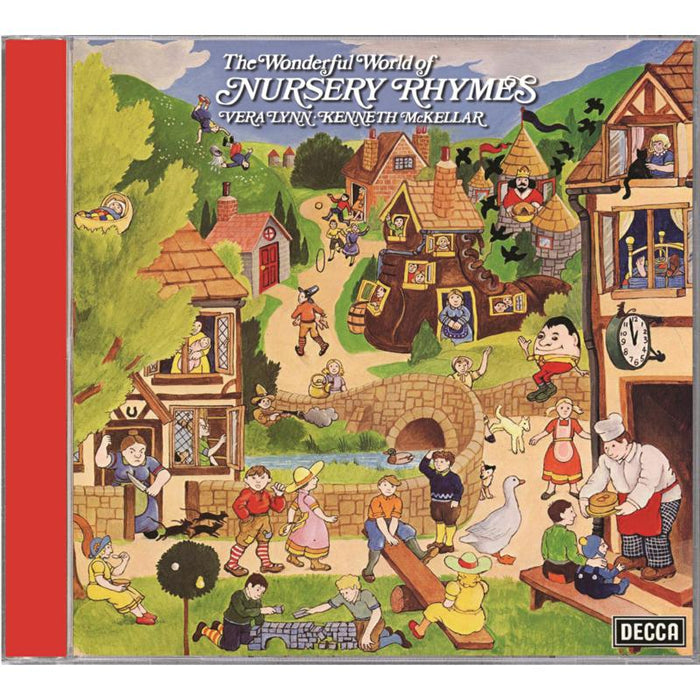Description
Supplementary to his legendary Beethoven cycles for Decca are Hans Schmidt-Isserstedt's recordings for Philips, Mercury, Deutsche Grammophon and Accord. They date from 1944 (Sutermeister) to 1972, when he made his last recording, fittingly by Mozart (Die Gartnerin aus Liebe) a composer whom he revered above all:
"We are too intimate friends ... I can't even explain what it is I feel when I listen to his music, that makes my eyes damp and my breath catch. ... At the end of my life I should like to dissolve myself completely in Mozart's music."
Hans Schmidt-Isserstedt became a household name for many record collectors in the 1970s thanks to the cycle of Beethoven symphonies recorded with the Vienna Philharmonic (newly reissued in a companion box-set by Eloquence: 4843981). Though he had made recordings and held several significant posts in pre-war Germany, such as directorship of opera houses in Berlin and Hamburg, his career took on a new lease of life after 1945 as the founder-conductor of the Hamburg Radio Symphony Orchestra, now known as the NDR Elbphilharmonie Orchestra. Their account of Rimsky-Korsakov's Scheherazade is dynamic and superbly prepared. The complete Hungarian Dances of Brahms is another delightful NDR/Schmidt-Isserstedt rarity revived in the set.
The celebrated Vienna Philharmonic cycle of Beethoven piano concertos with Wilhelm Backhaus demonstrated what a sympathetic accompanist Schmidt-Isserstedt was. In this set he lends equally attentive support to Monique Haas in Ravel, Alfred Brendel in Brahms (the pianist's first recording of the First Piano Concerto), Wolfgang Schneiderhan in Mozart and Henryk Szeryng in Beethoven.
After his international profile rose with the growing reputation of the NDR orchestra, he became a welcome guest on the podiums of Europe's great orchestras.
From 1955-64 he was chief conductor of the Royal Stockholm Philharmonic, and in 1962 recorded with them the First and Third symphonies of Berwald. He gave many first performances of new works, especially by English and German composers; Die Schopfung by Wolfgang Fortner is a vivid seventeen-minute setting of a poem by the American poet James Weldon Johnson, a contemporary reimagining of Creation, for which Schmidt-Isserstedt and the NDR orchestra accompanied Dietrich Fischer-Dieskau.
The conductor's first love was Mozart, and it is fitting that his last major recording project before his death from a heart attack in 1973 was another first on record, the German version (Die Gartnerin aus Liebe) of Mozart's early opera La finta giardiniera, for which Philips assembled an all-star cast including Jessye Norman, Hermann Prey and Tatiana Troyanos. This was greeted after his death as the perfect memorial to his unassuming art; unlike many maestros of his generation and background, he got what he wanted not through fear but respect and a spirit of collective endeavour.
Included, too, in this set are early (1940s) recordings made by the conductor of music by Mozart, Tchaikovsky and Sutermeister. This Eloquence set is issued with original covers and a new essay by Peter Quantrill on Hans Schmidt-Isserstedt and his career.
Schmidt-Isserstedt's perfectly chosen tempo for the Allegro of No. 39, his crisp handling of the minuets of both symphonies, his admirably Mozartian and unhurried speed in the finale of No.39, the light, dancing forte everywhere, are all a pleasure to hear." Gramophone, August 1959 (Mozart: Symphonies Nos. 39 & 41)
"Susskind and Schmidt-Isserstedt have similar ideas about Schubert. They play him in healthy, outgoing fashion. Both of these performances are vigorous and lively ... The orchestra plays well for both conductors, and the recording is bright and well-defined." Stereo Review, December 1959 (Schubert)
"Schmidt-Isserstedt's readings ... would be very hard indeed to beat ...They have all the positive musicianly virtues without which many an unaffected reading is merely dull ... [an acquisition] you would be unlikely to regret, whatever rival versions appear in the course of time." Gramophone, August 1960 (Mozart: Symphonies Nos. 39 & 41)
"In the slow movement, Szeryng and Schmidt-Isserstedt carry on a dialogue of increasing intensity, subsiding at the proper moment into a contemplative cadenza, and the finale, for once, has not been reduced to anticlimax by excessive drive in the first movement." High Fidelity, February


















